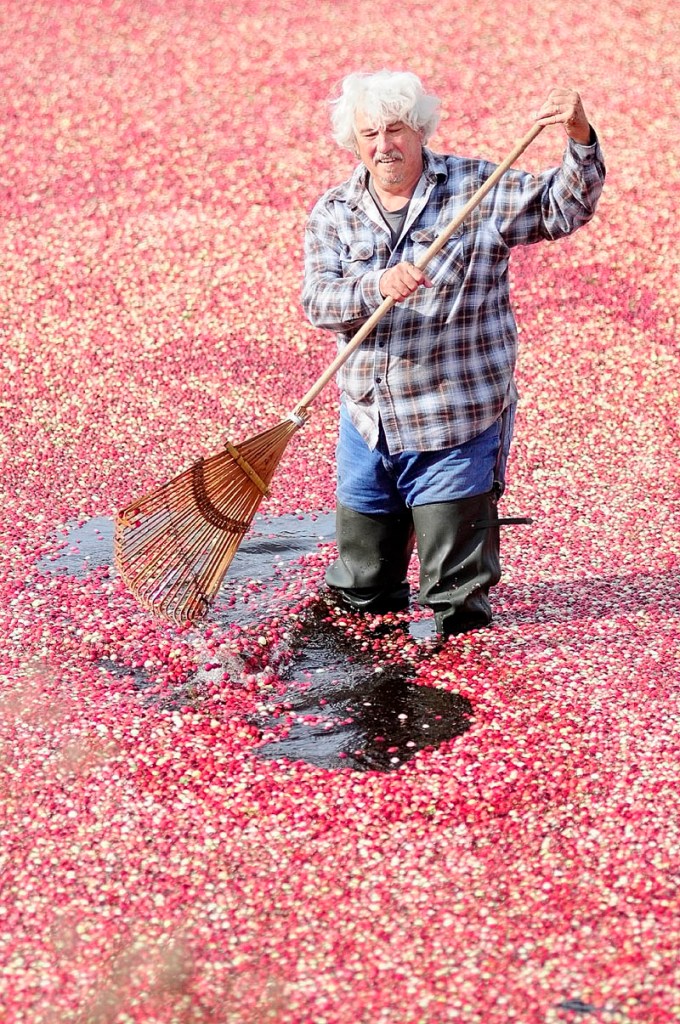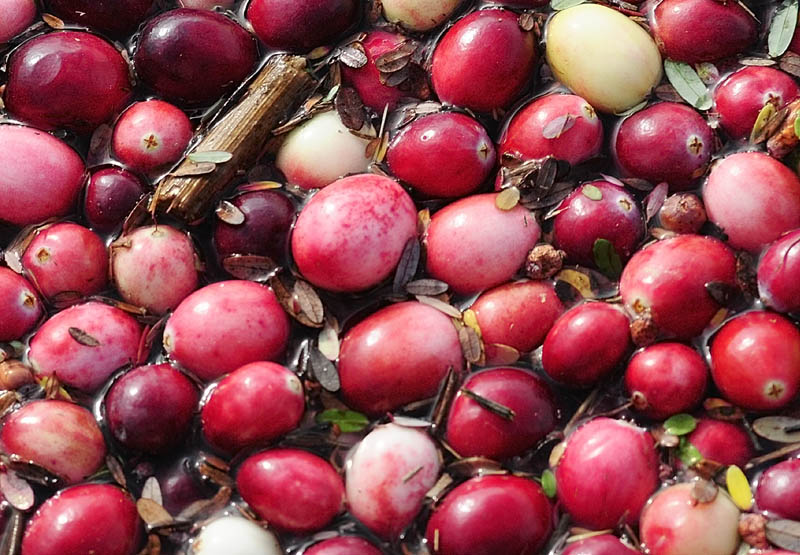Maine’s cranberry harvest is up this year, and one Cooperative Extension specialist thinks warmer weather brought on by climate change might be one reason for that.
Charlie Armstrong, a cranberry specialist with the Cooperative Extension at the University of Maine, in Orono, said warming weather since the mid-19th century — an average 1.5 to 2 degrees Fahrenheit globally — may be a harbinger of changes to come for agriculture statewide.
If the average temperature were to rise even a couple more degrees, he said, the difference could be significant, opening up parts of Maine to crops such as peaches, ordinarily grown as far south as Georgia, where the peach is the signature fruit.
Maine peaches now are so rare they almost qualify as exotics. They are grown only in small numbers in semi-rural areas such as Albion and Bowdoin.
“I never thought it would be possible to grow peaches in Maine,” Armstrong said. One grower has even decided to plant kiwis.
In contrast to peaches and kiwis, Maine cranberries, which represent a mere 1 percent of the nation’s total crop, seem like a large-scale agricultural staple.
Armstrong said the 2012 cranberry harvest, which begins this week in many bogs, is expected to yield 25,000 barrels, or 2.5 million pounds, from a total of only 210 acres of beds and bogs statewide. About half are in Washington County.
This year’s yield is still slightly less than that of the “best ever” year, 2010, when more than 29,000 barrels were harvested, Armstrong said. It exceeds last year’s crop of about 23,700 barrels — and final results are not yet in.
Despite an increase in troubles this year with such pests as worms and moths, cranberries “are looking super, overall,” Armstrong said. The cranberry fruitworm population was high this year — as much as three times more than normal — but even the most seriously affected growers lost only 5 percent to 10 percent of their crop.
Armstrong blamed the mild winter for high fruitworm and moth populations. More balmy temperatures “favor the over-wintering stage, halfway between the larva and the moth,” of the cranberry fruitworm, a pest that can devastate the crop.
A fungus known as root rot also caused an incremental loss in yield this year — about 1 percent statewide, which is typical, he said.
In many respects, climate change could “prove beneficial,” Armstrong said. A further rise in temperature could harm growers in states such as Massachusetts and New Jersey, traditionally big producers, and that probably would mean conditions in Maine would be more favorable for the berries, which can tolerate the warmer temperature but prefer cool nights.
On the flip side, such weather changes also could be a boon to insects, Armstrong said, adding, “For some growers, it might be more of a headache, because there might be more pests.”
It’s a problem that cranberry growers here struggled with during the growing season in the form of cranberry fruitworms and fruit rot, along with the threat of a new species of fruit fly, the spotted-wing dropsophila.
However, “narrow chemistries” in newer pesticides, which have replaced many of the more deadly organophosphates, helped keep yield up by eliminating pests that ordinarily take as much as 40 percent of an untreated crop, Armstrong said.
The two newer treatments — Bt, or Bacillus thuringiensis, and Entrust — have made a big difference in controlling “the highest fruit worm population I’ve seen in 10 years,” Armstrong said. Bt — a toxic crystal pesticide first identified in the early 1900s — now serves as a horticultural poison with residual toxicity lasting, at most, three weeks. It became part of the commercial chemical arsenal in the 1950s and in recent years has been part of genetically modified plant strategies, in this case to get plants to produce the bacterium on their own. Scientists are not certain how it works.
Entrust, a spinosad bacterial pesticide manufactured by Dow Chemical, is a similar product that has been registered for use on organically produced crops.
The success of this year’s cranberry harvest was not only that existing pests were kept down. In addition, the dreaded new fruit flies never materialized, Armstrong said.
As was the case with apples earlier this year, the misfortunes of other parts of the nation have meant good news for Maine cranberry farmers.
The summer drought devastated Midwest farmers and growers, reducing yields in fields, orchards, bogs and beds. The apple harvest alone in Wisconsin and Michigan saw yields plummet 80 percent to 90 percent.
“Wisconsin is being affected more so than I would have realized by the drought,” Armstrong said.
The nation’s largest cranberry-producing state, Wisconsin is reporting that the year’s dry conditions there will mean cranberries will be hard-hit, too, because adequate moisture is critical at every stage of the growth and ripening of the fruit.
Farming always entails working with the “vagaries of the weather,” said David Popp, a grower from Dresden, who is philosophical about the ups and downs of agriculture.
“We’ve had trends before in the past and we’ll have them in the future,” he said. “A little global warming doesn’t bother me a bit.
“Every part of Maine is getting a little warmer,” Popp said, “but we’re so far north, we can hardly lose.”
Popp has established cranberries on about 4 of his 140 acres in Dresden. Another 10 are devoted to a pick-your-own strawberry operation, and he raises a variety of fruit and vegetables, including raspberries, blackberries, high-bush blueberries, squash and pumpkins. Next year he plans to try growing sweet cherries and peaches.
He expects the cranberry crop will be ready “earlier that most years,” and he will start harvesting around the second week of October. The berries, he said, are coloring up better this year than last — another effect of the heat.
Armstrong estimates that the wholesale price of cranberries will reach 35 to 40 cents a pound, and retail dry-picked berries — what the average grocery store shopper buys — will run about $2.50 to $3.50 a pound.
All of Maine’s cranberries are dry-picked, yielding berries with a longer shelf life, Armstrong said.
To make the most of the harvest, growers say, the vines must be completely dry. Even a slight shower the night before, heavy dew or damp conditions from a light frost is enough to delay the harvest until the conditions improve on the vines.
Maine enjoyed a thriving cranberry industry in the 1800s, but it waned during much of the 20th century. A resurgence of interest in the fruit in the 1990s revived cultivation, and Washington County could accommodate more land in cranberries, Armstrong said. The grower-owned Ocean Spray, of Lakeville-Middleboro, Mass., is looking as far north as New Brunswick for new acreage.
Send questions/comments to the editors.





Comments are no longer available on this story